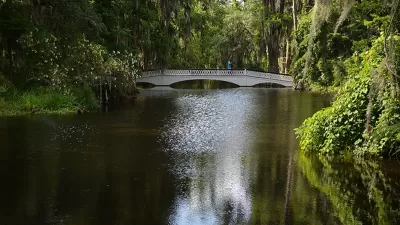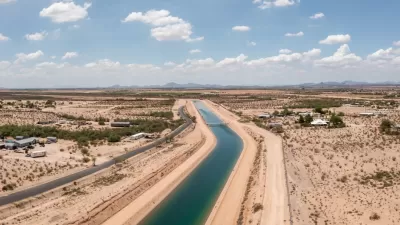A political battle over a large withdrawal of water for use by a Google server farm has one reporter deploying words like "war" and "free-for-all" to tell the story.

"Water wars" are erupting in South Carolina, according to an article by Bo Petersen, exacerbated by large water withdrawals by companies like Google.
"Forty million gallons of surface water per day now are pumped to customers by the Berkeley Water and Sanitation utility," according to Petersen. "Google, the marquee computer network company, apparently uses one-tenth of it — about 4 million gallons — to cool the servers at its only South Carolina data center, in Goose Creek."
A planned expansion of the server facility would require even more water—1.5 million gallons a day from a coastal aquifer. If permitted, Google would become the third largest aquifer user in the three-county Charleston region.
Opponents of Google's plan for the aquifer include local residents, water utility officials, and conservationists. How the battle plays out could set a precedent for the growing region that is only beginning to come to the grips with the environmental consequences of its growth. The article dives into the situation in South Carolina in detail, referencing similar situations in nearby states. South Carolina and other nearby states are "tightening regulations surrounding surface water withdrawal," according to Petersen, in response to decades of intermittent drought, warming temperatures, and growing residential and commercial demands.
FULL STORY: Google's controversial groundwater withdrawal sparks question of who owns South Carolina water

Study: Maui’s Plan to Convert Vacation Rentals to Long-Term Housing Could Cause Nearly $1 Billion Economic Loss
The plan would reduce visitor accommodation by 25,% resulting in 1,900 jobs lost.

North Texas Transit Leaders Tout Benefits of TOD for Growing Region
At a summit focused on transit-oriented development, policymakers discussed how North Texas’ expanded light rail system can serve as a tool for economic growth.

Why Should We Subsidize Public Transportation?
Many public transit agencies face financial stress due to rising costs, declining fare revenue, and declining subsidies. Transit advocates must provide a strong business case for increasing public transit funding.

How to Make US Trains Faster
Changes to boarding platforms and a switch to electric trains could improve U.S. passenger rail service without the added cost of high-speed rail.

Columbia’s Revitalized ‘Loop’ Is a Hub for Local Entrepreneurs
A focus on small businesses is helping a commercial corridor in Columbia, Missouri thrive.

Invasive Insect Threatens Minnesota’s Ash Forests
The Emerald Ash Borer is a rapidly spreading invasive pest threatening Minnesota’s ash trees, and homeowners are encouraged to plant diverse replacement species, avoid moving ash firewood, and monitor for signs of infestation.
Urban Design for Planners 1: Software Tools
This six-course series explores essential urban design concepts using open source software and equips planners with the tools they need to participate fully in the urban design process.
Planning for Universal Design
Learn the tools for implementing Universal Design in planning regulations.
City of Santa Clarita
Ascent Environmental
Institute for Housing and Urban Development Studies (IHS)
City of Grandview
Harvard GSD Executive Education
Toledo-Lucas County Plan Commissions
Salt Lake City
NYU Wagner Graduate School of Public Service





























